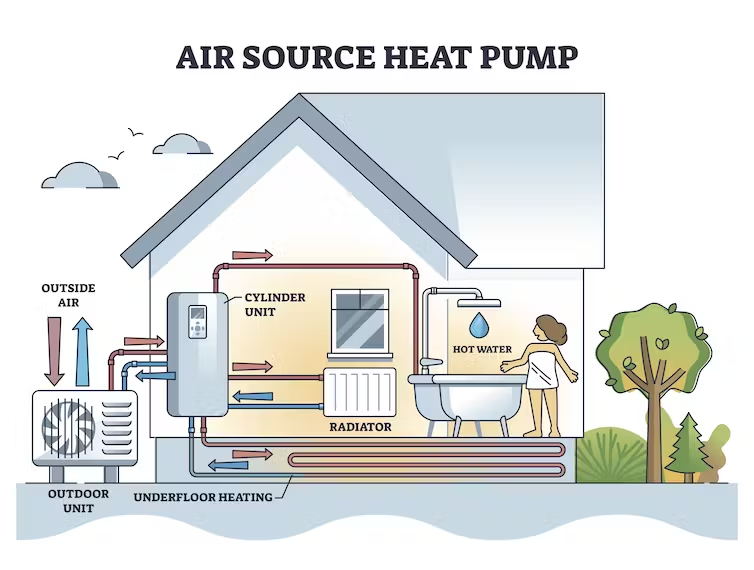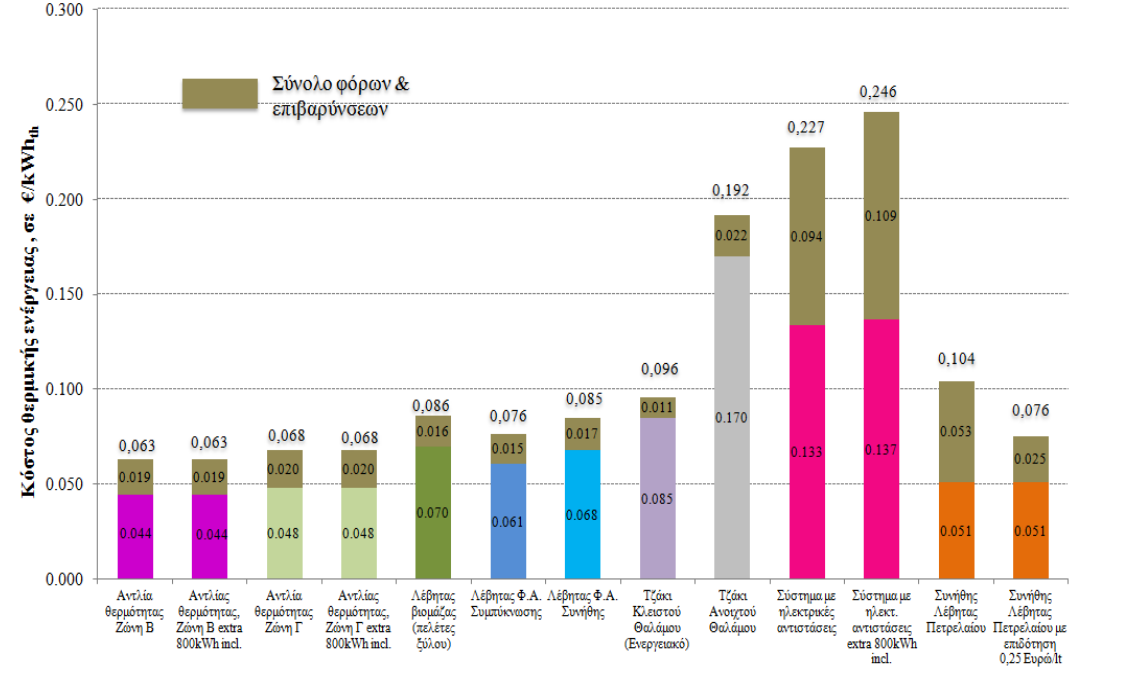How much do you know about heat pumps?
How much do you know about heat pumps?
Of course, the above is not a fixed ratio. This is because heat pumps extract heat from the environment. Their operation is therefore affected by the temperature of the environment. Always referring to heating mode, the colder it gets, the more the heat pumps consume (especially from 4°C and below). Quality heat pumps continue to operate in heating mode down to -15°C as long as the conditions set by the manufacturer are met. However, their consumption increases as they find it difficult to pump heat from such a low temperature. It can therefore be seen that the increased cost of electricity is not directly reflected in the cost of using heat pumps. The heat absorbed from the environment can reach up to 80% of the heat we need. This means that only 20% of the electricity is used. Therefore, the increase in the electricity tariff has only a small impact on the operating costs of a heat pump. Finally, it should be mentioned that when choosing a heating system, we do not only consider the cost of primary energy, e.g. electricity, oil, gas, etc.. We also take into account the estimated running costs and the specifics of each application, such as type of use, insulation, region, etc. Each case is unique and no technology is good if not properly implemented.

What are the advantages of installing it?
- A heat pump can be connected with 100% compatibility for heating and hot water production operation with any radiator or underfloor heating system and in combination with solar panels and boilers, while for cooling it is necessary to connect with Fan coil Units.
- Its installation does not require the existence of a special space, as it can be easily installed in any space.It is also easy and quick - as fast as 2 days, and does not require additional building work. While its operation is silent helping to reduce noise pollution.
- Heat pumps are included in government grant schemes such as the "Home Savings" scheme.
- Heat pumps are part of the Renewable Energy Sources (RES) with zero exhaust gases and reduced CO2 emissions.
- With a heat pump you save up to 70% for heating/cooling your home and a continuous supply of hot water. Heat pumps use around 30% electricity, while the remaining 70% is taken from the environment.
- They are the most economical heating option thanks to their high energy efficiency.
- Their technology is the most environmentally friendly than any other combustion device.
- Their payback is very fast in places that need continuous heating, such as areas with low temperatures.
- They can be connected to an existing heating system and are ideal in areas where total or partial renovations are being carried out. Running costs can be reduced by 50% offering great annual savings.
A heat pump is the most economical option by up to 60% compared to oil. According to a study by the National Technical University of Athens (http://www.lsbtp.mech.ntua.gr/el/th_cost_intercomparison), heating via heat pumps is significantly the most cost-effective solution.

Copyright © KtirioService 2006-2025. All Right Reserved.
Designed & developed by webgift.


